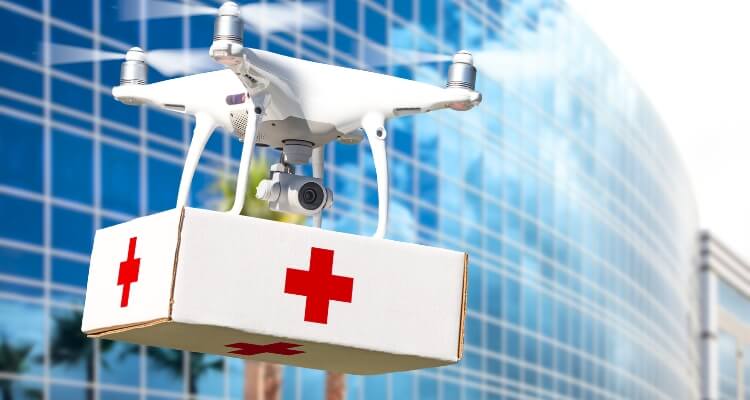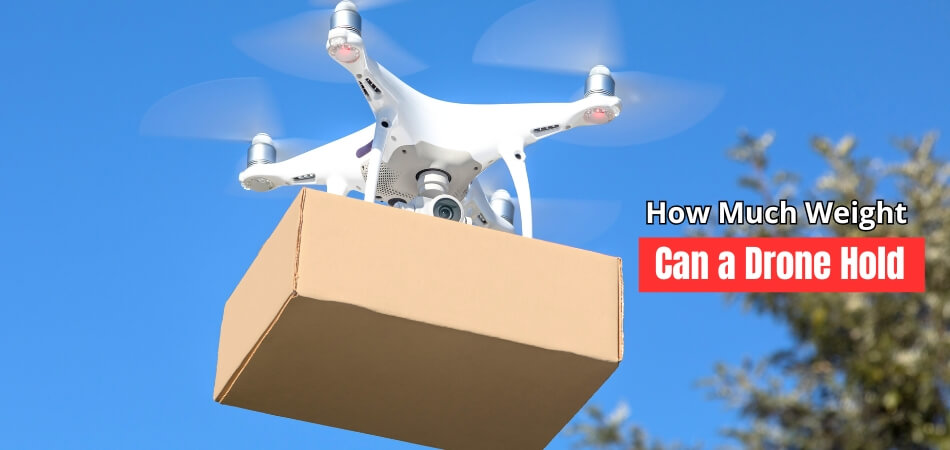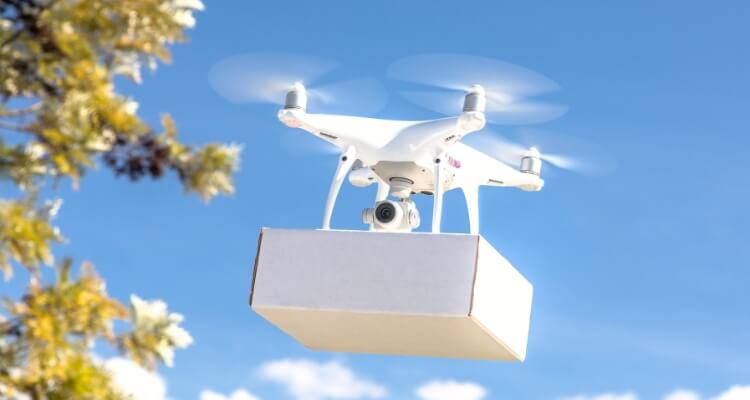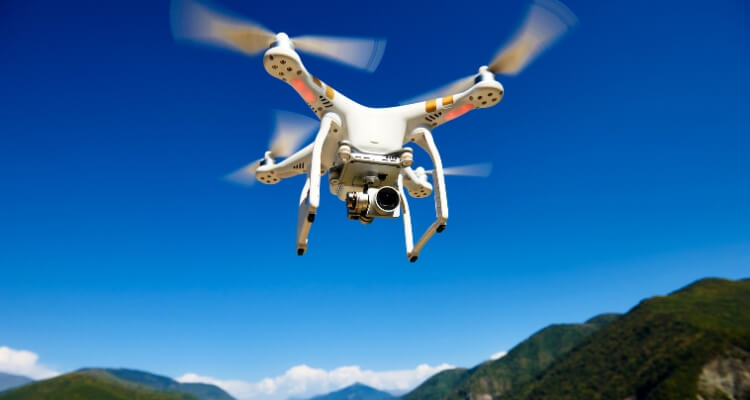Introducing the remarkable Tactic Air Drone your gateway to the skies! Ever asked, “How much weight can a drone hold?” Strap in as we unravel the lifting capabilities of these aerial wonders. From amateur enthusiasts to seasoned pilots, understanding payload capacities is crucial.
Most amateur drones like the DJI Mini series handle 0.3 to 2 kg (0.4 to 4.4 pounds). Looking at specifics, small drones, including the DJI Mini series, typically lift 0.5 – 1 kg (1.1 – 2.2 lbs), while midsize drones like the DJI Mavic series carry 1 to 2 kg (2.2 to 4.4 lbs).
Whether you’re a hobbyist capturing stunning aerial footage or professional mapping landscapes, knowing your drone’s capabilities is key. We will explore deeper into this fascinating topic in the coming weeks. Are you ready to explore the skies with a Tactic Air Drone? Here we go!
What Is Drone’s Payload Capacity?
Are you interested in learning more about the capabilities of the Tactic Air Drone? Take a closer look at its payload capacity and what it means for your aerial endeavors.

When we talk about a drone’s payload capacity, we’re referring to the maximum weight it can carry during flight. For the Tactic Air Drone, this figure varies depending on its model and configuration.
Factors such as motor power, frame design, and battery capacity all play a role in determining a drone’s payload capacity. These elements collectively contribute to the drone’s ability to lift and transport objects while maintaining stability in the air.
Knowledge of your drone’s payload capacity is crucial for planning missions and ensuring the safe operation of your aerial equipment. Whether you’re capturing stunning aerial footage or conducting research, knowing your drone’s limits is essential for success.
The payload capacity of the Tactic Air Drone dictates its versatility and suitability for various tasks. By familiarizing yourself with this important aspect of drone technology, you can make the most of your aerial adventures with confidence.
What Factors Determine a Drone’s Weight Limit?
Would you like to know what makes a Tactic Air Drone capable of carrying specific loads? It is important to understand the key factors that influence the weight limit of this device.
Motor Power and Thrust Efficiency
The strength of a drone’s motors directly impacts its ability to lift weight. Powerful motors generate more thrust, allowing the drone to carry heavier payloads. Additionally, efficient motor designs maximize power output while minimizing energy consumption, further enhancing lifting capacity.
Frame Design and Material
The structure of a drone’s frame plays a crucial role in determining its weight limit. Lightweight yet sturdy materials, such as carbon fiber or aluminum alloys, contribute to the drone’s overall durability and lifting capabilities. A well-engineered frame design distributes weight evenly, ensuring stability during flight.
Battery Capacity and Flight Time
The size and capacity of the drone’s battery affect its ability to sustain flight while carrying a payload. Larger batteries provide more energy, allowing the drone to support heavier loads for extended periods. However, increased battery size may also add to the overall weight of the drone, impacting its agility and maneuverability.
Aerodynamic Efficiency
Efficient aerodynamics reduce drag and improve the drone’s overall performance, including its weight-carrying capacity. Streamlined designs and optimized airflow around the drone minimize energy loss, allowing for more efficient use of power to lift payloads.
Control and Stability Systems
Sophisticated control and stability systems, such as gyroscopes and accelerometers, play a vital role in managing the drone’s balance and stability during flight. These systems continuously adjust the drone’s orientation and position, ensuring smooth and controlled movements, even when carrying heavy loads.
How Much Weight Can Air Drone Carry?
Interested in learning just how much weight the Tactic Air Drone can handle? Taking a closer look at its impressive lifting capabilities, Here are the details.

Knowledge Weight Capacity
Before we grub into specific numbers, it’s essential to understand how weight capacity is determined for drones like the Tactic Air. Several factors come into play, including motor power, frame design, and battery capacity.
Motor Power and Thrust
The Tactic Air Drone’s motor power is a primary factor in determining its weight-carrying capacity. Stronger motors can generate more thrust, allowing the drone to lift heavier payloads with ease. The efficiency of these motors also plays a role, ensuring optimal performance while conserving energy.
Frame Design and Material
The design and materials used in the Tactic Air’s frame contribute significantly to its weight capacity. Lightweight yet durable materials, such as carbon fiber or aluminum alloys, provide the strength needed to support heavy payloads without adding unnecessary bulk.
Battery Capacity and Flight Time
The size and capacity of the drone’s battery directly impact its ability to carry weight. A larger battery can provide more power, allowing the Tactic Air to sustain flight while carrying heavier loads. However, it’s essential to balance battery size with flight time to ensure optimal performance.
Payload Versatility
The Tactic Air Drone’s weight-carrying capacity opens up a world of possibilities for users. Whether you’re a photographer capturing breathtaking aerial shots or a researcher deploying sensors for data collection, knowing the drone’s capabilities allows you to plan and execute missions effectively.
Real-World Applications
From filmmaking to agriculture, the Tactic Air’s ability to carry payloads has practical applications across various industries. Knowledge its weight capacity empowers users to push the boundaries of aerial technology and unlock new possibilities for innovation and creativity.
Tips for Maximizing Your Drone’s Weight Capacity
Looking to get the most out of your Tactic Air Drone’s weight-carrying capabilities? Check out these handy tips to maximize performance:

- Choose the Right Payload: Select lightweight materials for your payload to minimize strain on the drone’s motors and battery.
- Optimize Battery Management: Ensure your drone’s battery is fully charged before flight to maximize power output and extend flight time.
- Balance Weight Distribution: Distribute the payload evenly across the drone’s frame to maintain stability and prevent imbalance during flight.
- Upgrade Motor and Propeller: Consider upgrading to more powerful motors and propellers to increase the drone’s lifting capacity.
- Monitor Temperature: Be mindful of operating temperatures, as extreme heat or cold can affect battery performance and overall drone function.
- Practice Safe Flying: Avoid pushing your drone beyond its limits to prevent damage or accidents. Respect weight limits specified by the manufacturer.
- Calibrate Sensors Regularly: Keep your drone’s sensors calibrated to ensure accurate readings and optimal performance during flight.
- Check for Damage: Regularly inspect your drone for any signs of wear or damage that could impact its weight-carrying capabilities.
- Avoid Overloading: Stick to the recommended weight limits for your drone model to avoid straining the motors and risking equipment failure.
- Stay Updated: Keep abreast of firmware updates and manufacturer recommendations to ensure your drone is operating at peak performance.
Safety Considerations when Pushing a Drone Limits
Thinking of pushing your Tactic Air Drone to its maximum weight capacity? Safety should always come first. Here are some crucial considerations to keep in mind:

Assess Your Environment
Before attempting to carry heavy loads, assess the flying conditions carefully. Avoid flying in strong winds or adverse weather conditions that could compromise your drone’s stability and control.
Check Your Equipment
Ensure your drone is in top condition before pushing its limits. Inspect the motors, propellers, and frame for any signs of wear or damage that could affect performance. Always follow the manufacturer’s guidelines for weight limits and payload capacity.
Monitor Battery Life
Keep a close eye on your drone’s battery life, especially when carrying heavy payloads. Low battery levels can impact the drone’s ability to maintain altitude and stability. Always fly with fully charged batteries and consider using additional battery packs for longer flights.
Maintain Line of Sight
Maintaining visual contact with your drone is essential, especially when flying with heavy payloads. Keep your drone within line of sight at all times to ensure you can react quickly to any potential hazards or obstacles.
Avoid Overloading
Resist the temptation to overload your drone beyond its recommended weight capacity. Exceeding the weight limit can strain the motors and battery, leading to reduced flight performance and potential equipment failure.
Practice Safe Flying Techniques
When flying with heavy payloads, use smooth and controlled movements to maintain stability and control. Avoid sudden maneuvers or aggressive flying techniques that could destabilize the drone and increase the risk of accidents.
Be Mindful of People and Property
Always fly your drone responsibly and considerately, especially when carrying heavy payloads. Avoid flying over crowded areas or near people and property to minimize the risk of injury or damage in case of an accident.
Stay Informed
Stay informed about local regulations and restrictions regarding drone operation, especially when flying with heavy payloads. Familiarize yourself with airspace regulations and obtain any necessary permits or permissions before conducting flights in controlled airspace.
FAQs About How Much Weight Can a Drone Hold
Inquire about the weight limits of drones like the Tactic Air? Here are some common questions answered:
Are There Legal Restrictions on Drone Weight Limits?
Some countries may have regulations regarding the maximum weight a drone can carry. It’s essential to familiarize yourself with local drone laws and regulations before flying with heavy payloads.
How Do I Calculate the Weight My Drone Can Carry?
To calculate a drone’s maximum payload capacity, consider factors such as motor thrust, frame strength, and battery capacity. Consult the drone’s specifications and perform test flights to determine its capabilities accurately.
What Are the Risks of Flying with Heavy Payloads?
Flying with heavy payloads can strain the drone’s components and increase the risk of mechanical failure. It’s essential to assess flying conditions carefully and practice safe flying techniques when carrying heavy loads.
Can Weather Conditions Affect a Drone’s Weight Capacity?
Adverse weather conditions such as strong winds or rain can affect a drone’s ability to carry heavy payloads. It’s advisable to avoid flying in inclement weather to ensure safe and stable flight operations.
How Can I Ensure Safe Operation when Pushing My Drone’s Weight Limits?
To ensure safe operation when pushing a drone’s weight limits, always follow manufacturer guidelines, inspect your drone regularly, and fly in suitable weather conditions. Prioritize safety to avoid accidents.
Final Thought
Having a thorough understanding of the weight capacity of drones like the Tactic Air is crucial to ensuring a safe and successful aerial operation. Users can confidently push the limits of their drones while minimizing risks by considering factors such as motor power, frame design, and battery capacity.
Whether you’re a hobbyist capturing stunning aerial footage or a professional conducting research missions, knowing how much weight a drone can hold is essential for planning and executing tasks effectively.
To fly your Tactic Air Drone with confidence, be sure to consider its weight capacity before taking to the skies. How much weight can a drone hold? It’s not just a question; it’s the key to unlocking endless possibilities in aerial technology.






